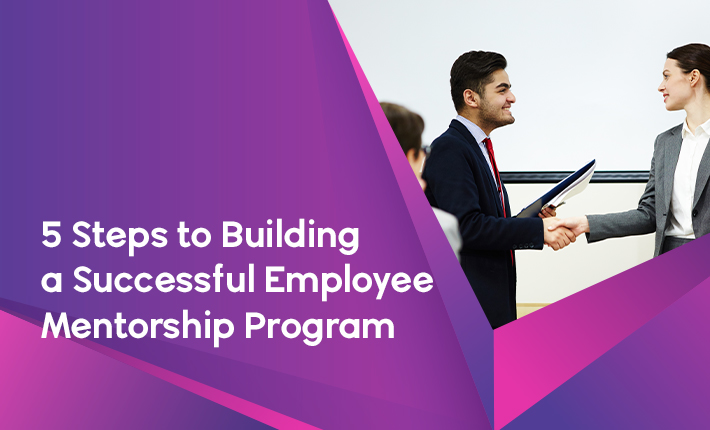Employee mentorship programs can be a valuable tool for companies looking to develop their employees and improve retention rates. Developing a successful employee mentorship program requires meticulous planning and execution. Follow these five steps to build a successful mentorship program that benefits both mentors and mentees.
The First Step is to Establish the Objectives and Goals of the Program
Before launching an employee mentorship program, it’s important to define the goals and objectives of the program. What are your objectives for the program? Is it to improve employee retention rates, develop leadership skills, or increase employee engagement? Once you have a clear understanding of your goals, you can design a program that aligns with those objectives. It’s also important to communicate the goals and objectives of the program to all participants, so they understand what they are working towards.
Identify Potential Mentors & Mentees
The next step in building a successful employee mentorship program is to identify potential mentors and mentees. Look for employees who have the skills, experience, and knowledge to serve as effective mentors, as well as employees who are eager to learn and grow in their careers. Consider factors such as job performance, leadership potential, and career aspirations when selecting participants for the program. It’s also important to ensure that both mentors and mentees are committed to the program and have the time and resources to participate fully.
To identify potential mentors and mentees, you can use a variety of methods, including employee referrals, performance evaluations, and self-nominations. It's important to ensure that both mentors and mentees are willing and able to commit to the program, and that they have compatible personalities and work styles.
Develop a Structured Program With Clear Guidelines and Expectations
To ensure the success of your employee mentorship program, it’s important to develop a structured program with clear guidelines and expectations. This includes setting goals for the program, outlining the roles and responsibilities of mentors and mentees, and establishing a timeline for the program. It’s also important to provide training and support for mentors to ensure they have the skills and knowledge needed to effectively mentor their mentees. By providing a clear structure and guidelines, you can help ensure that your mentorship program is successful and beneficial for all participants.
It's important to customize the mentorship plan to the needs and goals of each mentor-mentee pair. This may involve setting specific goals and objectives for each pair, as well as identifying specific skills and knowledge that the mentee needs to develop.
Offer Guidance and Assistance to Mentors and Mentees Through Training and Ongoing Support
One of the key factors in building a successful employee mentorship program is providing training and support for both mentors and mentees. This can include training on effective communication, goal setting, and feedback techniques. Mentors should also receive training on how to provide constructive feedback and support their mentees in achieving their goals. Additionally, it’s important to provide ongoing support and resources for both mentors and mentees throughout the program to ensure they have the tools and guidance they need to succeed. By investing in the training and support of your mentors and mentees, you can help ensure the success of your mentorship program.
It's also important to provide ongoing support for mentors and mentees throughout the program. This may involve regular check-ins, feedback sessions, and opportunities for mentors and mentees to share their experiences and challenges with each other.
Evaluate and Adjust the Program as Needed
Once your employee mentorship program is up and running, it’s important to regularly evaluate its effectiveness and make adjustments as needed. This can include gathering feedback from both mentors and mentees, tracking progress towards goals, and assessing the overall impact of the program on employee development and retention. Based on this feedback and data, you can make changes to the program to better meet the needs of your employees and ensure its continued success. Remember, a successful mentorship program is one that evolves and adapts over time to meet the changing needs of your organization and its employees.
It's also important to solicit feedback from mentors and mentees on their experience with the program. This feedback can be used to make improvements to the program, and to ensure that it continues to meet the needs and goals of the organization.
Conclusion
Employee mentorship programs can be a valuable tool for companies looking to develop their employees and improve retention rates. By following these five steps, you can build a successful mentorship program that benefits both mentors and mentees. Remember to define the goals and objectives of the program, identify potential mentors and mentees, develop a structured program with clear guidelines and expectations, provide training and support for mentors and mentees, and evaluate and adjust the program as needed. By investing in your employees through mentorship, you can help them grow and develop in their careers while also improving the overall success of your organization.






Leave a reply